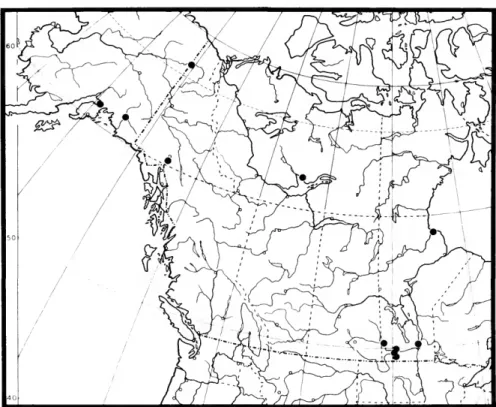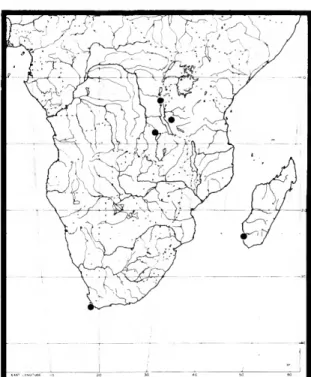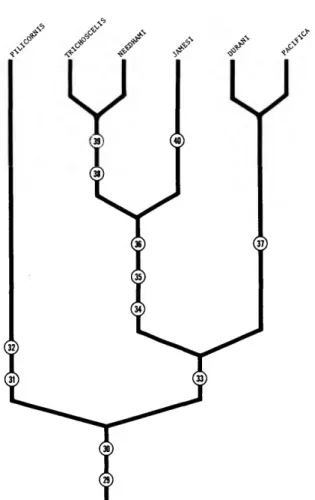Character evidence to support the monophyly of species groups and their intrageneric relationships is as follows. The aldrichi group is the sister group of the pacifica group, and is characterized by, and its.
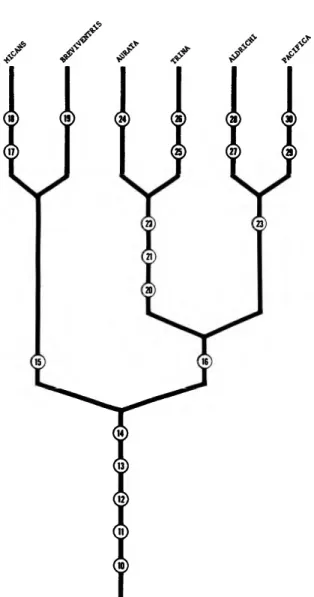
Setacera atrovirens (Loew)
Foote's laboratory experiments showed that the larvae of this species would readily develop in algae of the genera Anabaena, Cylindrospermum, Lyngbya, Nostoc, and Navicula. Foote observed several successful attacks on Setacera larvae by the larvae of the water trap beetles (Hydrophilidae), which are probably the main predators on the larvae.
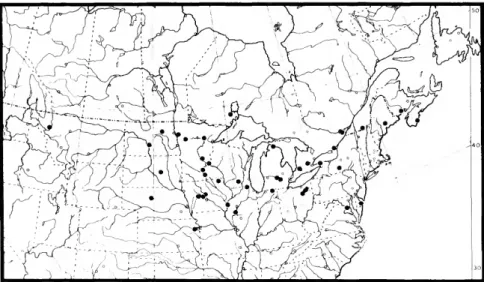
Setacera micans (Haliday)
DISTRIBUTION.-This strictly ancient group of species is widely distributed in all the included zoogeographical regions. Distribution data are not completely reliable, as some of the species are at least partially sympatric.
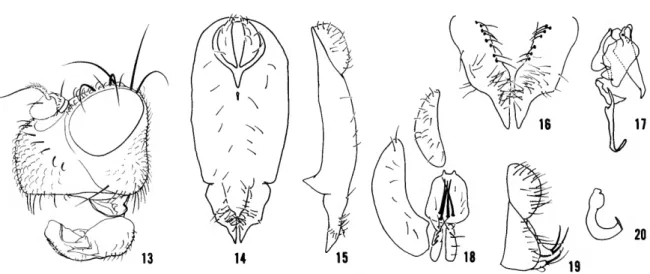
Setacera breviventris (Loew)
NATURAL HISTORY.-Unlike the other species groups, the species of the breviventris group are apparently more commonly found along the banks of lotic water systems, especially small streams with exposed mud banks. DISCUSSION.-Although the species group is easily recognized in both sexes from evaluation of external characters, its constituents are difficult to distinguish without reference to characters of male terminalia. The specimen is double mounted (minute needle in cork block) and is in good condition.
Cresson's original description also lists two male and nine female paratypes from "Austria, Alte Sammlung". One of the last specimens is in the Academy and is labeled "ALLO-TYPE 6372 Setacera Pedalis 9 [red]". Hokkaido University insect collection curator Dr.
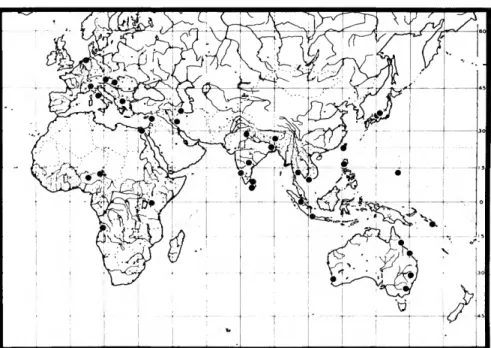
Setacera multicolor (Soika)
DISTRIBUTION (Figure 29).—This is the most widespread species of the genus, occurring in four of the great zoogeographic regions of the Old World: Australian, Oriental, Palaearctic, and Afrotropical. Although lentic aquatic systems occurred in the same area, the species occurred more commonly along lotic systems. REMARKS.—As indicated in the synonymy, several names have been found to be junior synonyms of S .
In each case, I have examined the appropriate type of material to confirm the specificity of the taxa involved. REMARKS.-Both species of Setacera occurring in the Afrotropical Region are members of the breviventris group, S.
Setacera viridis Miyagi
Abdomen: male 5th tergum with anteroventral angle extended to form a posteriorly curved, narrow protrusion; male terminalia (figures 31, 32) with surstyli in posterior view with apices rounded, oval, setose along the median margin, sac formed between surstyli moderately wide, width less than depth; gonite with a posterior broad, blunt process, apically broadly rounded, median process usually fused with the anterior, forming a narrow, posterior process of about half the length of the anterior process, anterior process long, moderately narrow, more or less parallel to the sides, rounded apically; aedeagus wider than long, broadly rounded dorsally; hypandrium with 2 pairs of teeth, posteromedian pair approximately, short, less than half the length of the other pair, anterolateral pair robust, apically recurved. Abdomen: male 5th tergum with anteroventral angle formed into a narrow, posteriorly curved, acutely pointed projection; male terminalia (figures 38-40) with surstyli in posterior view short, apically rounded, median margin noticeably more setose than lateral margin, with dorsomedic, angulated notch, apices evenly tapering to acutely pointed apex in lateral view; gonite with posterior projection broad and truncated, width twice long, median and anterior projections. Male terminalia (figures 44-47): Epandrium without median groove, greatest width subdorsal in posterior view, dorsum truncated; surstylus in lateral view with a parallel-sided, lateral projection that is apically truncated and oriented anteroventrally, lateral margin in posterior view with subbasal lateral swelling on lateral process, ventromedian process with lateral margin setosis;
Female terminalia (figures 48, 49): 7th tergum completed; 8th tergite long and moderately narrow, 3 times higher than wide, more or less parallel to the sides, venter and dorsum even and narrowly rounded; 8th sternites short, 3 to 4 times longer than wide; 9th sternum oriented vertically, generally poorly sclerotized, especially dorsally, narrow U-shaped in posterior view, each lateral arm set basally, more so along the median margin; 9th sternal setae evenly distributed, approximately, median 2 aligned slightly more ventrally than lateral, base from which setae arise, projects posteroventrally, distance between setae insertions and ventral margin of cerci greater than grain height; cercus in lateral view higher than wide, posterior margin broadly rounded; female ventral receptacle with operculum relatively small, wider than high, dorsally shallow papilionate, elongating process. 45, male terminalia, lateral aspect; 46, internal male genitalia, lateral aspect; 47, aedeagus, lateral aspect; 48, female ventral receptacle, lateral aspect; 49, female terminalia, lateral aspect.
Setacera aurata (Stenhammar)
NUMBER 350 27 Lund, Sweden (specimen temporarily in .. custody of Dr. Richard Dahl, Helsingborg, Sweden). DIAGNOSIS. – Individuals from the trina group can be distinguished by the following combination of characters: the antennal foveae are densely tomentose, in marked contrast with the subluminous to shiny dorsum of the interfoveal carina; arista with longest dorsally branched rays at most slightly longer than width of arista at base; vertico-orbite with velvety tomentose band, moderately narrow but prominent, slightly enlarged subanteriorly at vertex; posthumeral seta moderately well developed, equal to largest humeral seta to slightly weaker than posterior notopleural seta, distance between it and presutural seta slightly greater than half distance between notopleural seta; supraspiracular convexity uniformly convex;. DISTRIBUTION.—The composite distribution of the trina group covers the area from Great Britain through Germany, Italy and Israel to Iran.
The unique gonite shape of the male terminalia, especially the anterior process, is an apotypic character. External differences between the species of the trina group are small, and I have relied on characteristics of the male and female terminalia to determine the identity of specimens.
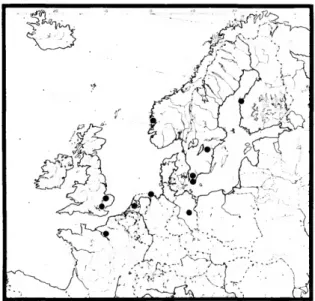
Setacera freidbergi, new species
FIGURES 51-58.—Setacera freidbergi: 51, head, lateral view; 52, chest, back; 53, internal male genitalia from type locality; 54, internal male genitalia from Iran; 55, abdomen of a man, dorsal view; 56, male terminals, rear side; 57, surstyli from the type locality, posterior part; 58, surstili from Iran, back page. FIGURES 59-66.—Setacera freidbergi: 59, ventral part of head, lateral view; 60, left tems and vertico-orbits of the head, dorsal view; 61, left vertico-orbit showing velvety tomentosity, dorsal aspect; 62, notopieuron and surrounding thorax, lateral view; 63, propleuron, lateral aspect; 64, posterior coxal band bearing setae, lateral view; 65, female terminals, ventral view;. REMARKS.—Specimens from Iran closely resemble those from the type locality, although the shape of the gonite consistently varies slightly.
I am of the opinion that both populations are conspecific and that the differences represent intraspecific variation of allopatric populations. This species is closely related to the other two known species of the trina group, and I can tell them apart only after examining the male terminal.
Setacera meneghinii Canzoneri
The specimen is mounted twice (minute nadel on foam block) and is in good condition, although some of the tarsomeres of the left legs are missing. The abdomen is removed and dissected; the male terminals are mounted in balsam on a celluloid rectangle that is fixed separately from the rest of the body. REMARKS.—In the discussion section of the original description, Collin briefly commented on some, perhaps all, of the specimens of the type series.
The width of the male gonite at its base is the largest within the species group and serves to distinguish this species from closely related congeners. This relationship and the monophyly of the species group is shown in Figure 2, with accompanying character evidence.
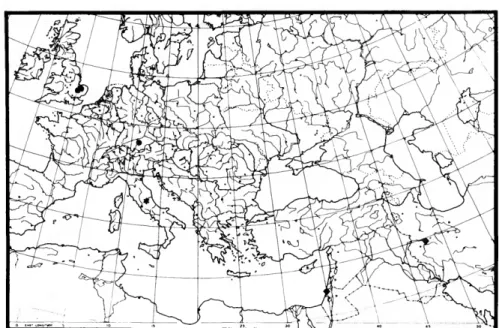
Setacera aldrichi Cresson
DISCUSSION. The characterization of the Pacifica group and the evidence to establish its monophyly have been elaborated previously (see 'Phylogeny', page 6). Configuration of male terminalia: The unique shape of the male terminalia of this species is autapotypic. Configuration of male lerminalia: Males of this group have a median projection, apparently a unique, apotypic feature.
Male midfemur mount: Males of these two species have a short row of distinct setae along the ventrum of the midfemur. Thorax: Supraspiracular convexity evenly convex; forecox of male with dense patch of long, thin setae, especially posteroventrally;.
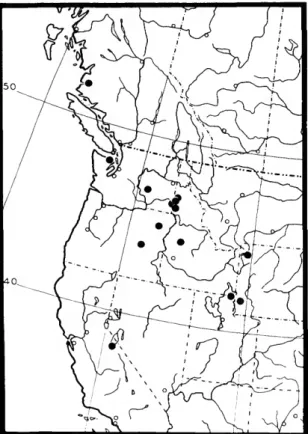
Setacera needhami Johannsen
The publication of Johannsen's description of the immature stages before Cresson's treatment of the adult is unfortunate and has resulted in an ambiguous use of. According to the current rules of zoological nomenclature (ICZN, 1964), a lectotype must be designated from one of the syntypes, the latter being defined as "all specimens of the type series. My rationale for considering adult specimens as part of the type series is as follows : nurtured as a new species description, the content and format of his description were incomplete.
The adult specimens are the images of the same individuals that Johannsen described as larvae and puparia. Since the characters of the male terminalia are consistent within the sample I examined, I recognized the appropriate populations as separate species.
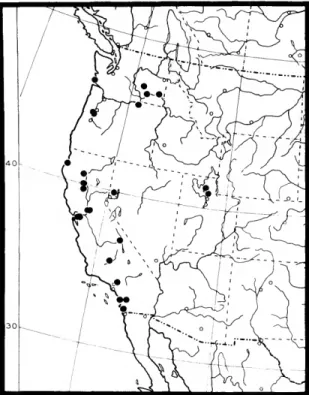
Setacera pacifica (Cresson)
Indeed, the larvae and puparia of Ephydra and Setacera are still not always separable at the generic level. The rules also define a "typical series" as "all the specimens on which the author bases the species, except those which he refers to as variants, or doubtfully associates with the nominal species, or expressly excludes from it" (Article 72B , ICZN). Johannsen did not designate a holotype, nor did he clearly state which specimens were included in the type series; however, he specifically stated:
117, right vertico-orbit showing velvety tomentosity, dorsal aspect; 118, right antenna, lateral aspect; 119, notopleuron and surrounding area of thorax, lateral aspect; 120, propleuron, lateral aspect; 121, fore- and midcoxae, anterior aspect; 122, anterior aspect of prosternum; 123, posterior thorax, lateral aspect; 124, supraspiracular convexity with papillae, lateral aspect. I have also collected a few adults from algal mats on the surface of the pooled flow of hot springs in Oregon (Crane Hot Spring) and Utah.
Setacera pilicornis (Coquillett)
Thorax (Figure 127): Posthumeral seta weak, at most slightly stronger than largest humeral seta; supraspiracular convexity uniformly convex; male coxae and legs lack visible tufts or dense patches of longer setae; ratio of costal veins on average 1 : 0.23; Averaging the ratio of vessels M1+2. Female terminalia (Figure th tergum complete; 8th narrow, ventrally narrowed, widest subdorsally, anterior margin shallowly concave, posterior margin rounded; 8th sternites elongate, more than 6 times longer than wide; cercus in lateral view wider than high, posterior margin broadly rounded, with distinct, separate sclerite between cercus and 8th tergite; ventral receptacle of female (Fig. 131) with operculum rounded dorsally and laterally, unlike in description of species group FIGURES 128-132.— Setacera pilicomis: 128, terminals of male , lateral view; 129, internal male genitalia, lateral view; 130, surstyli, posterior view; 131, ventral receptacle of female, lateral view; 132, female terminals, lateral view.
NATURAL HISTORY. Numerous specimens of this species were collected as prey of sphecid wasps on St. Although Coquillett's original description of this species indicated only a single male specimen, which automatically becomes the holotype, the Philadelphia Academy of Natural Sciences collection contains four additional specimens labeled as paratypes with Cresson's characteristic blue labels.

Setacera trichoscelis y new species
The holotype, allotype and most of the paratypes are in the Canadian National Collection, Ottawa, type 15239. Bei-Bienko, editor, Opredelitel Nasekimich Europejskoi tsasti SSRR [Keys to the insects of the European USSR. A revision of the Old World brine flies of the genus Ephydra (Diptera: Ephydridae).
Synonymy in the zoology and paleobiology series must use the short form (taxon, author, year page), with a full reference at the end of the article under "Literature Cited." Footnotes, if few in number, annotative or bibliographical, should be typed at the bottom of the text page on which the reference appears.
